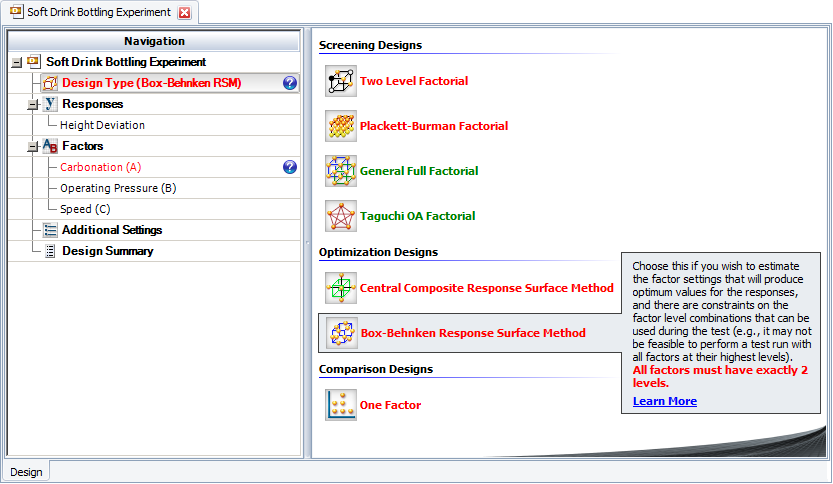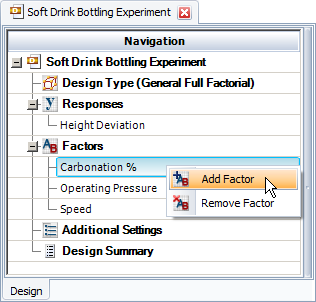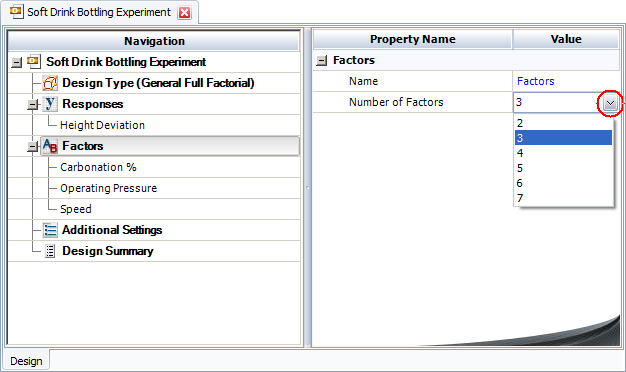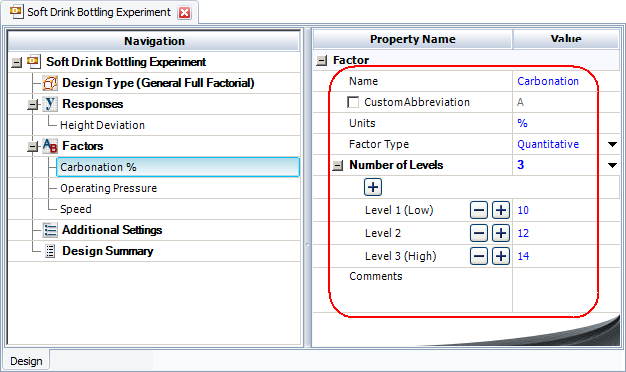

| Related Topics: | ||
Before building your design, make sure you have the correct number of factors and that each factor is defined appropriately.
Note that if a factor appears red in the navigation panel (as shown next), then it is incompatible with the selected design type. The reason will be displayed in red text next to the selected design.

Note: For robust design folios, factors are configured separately for the inner array and the outer array. For example, you could use two factors (e.g., pressure and viscosity) for the inner array and one factor (e.g., humidity) for the outer array.
There are three ways to add or remove factors from a design.
You can choose Experiment > Factors > Add Factor.
![]()
You can remove a factor by selecting it in the navigation panel and choosing Experiment > Factors > Remove Factors.
![]()
You can also add/remove factors by right-clicking a factor and choosing the appropriate option from the shortcut menu that appears.

To quickly add or remove several factors at once, you can click the Factors heading and then change the number in the Number of Factors drop-down list in the input panel, as shown next.

Note than when you decrease the number of factors using the drop-down list, the factors at the bottom of the list will be deleted first.
You can define the properties of each factor by selecting it in the navigation panel and editing its properties in the input panel, as shown next.

The following properties are available:
Name is a label for the factor.
Custom Abbreviation allows you to enter your own abbreviated name for the factor. If you clear this check box, the default abbreviation "A" will be used for the first factor, "B" will be used for the second factor, and so on. The abbreviated name is used when referring to interactions in plots and when specifying generators.
Factor Type allows you to specify whether the factor levels are quantitative (e.g., "300 K") or qualitative (e.g., "Small"). Note that predictions are possible only with quantitative factors.
Units are the units of measurement that will be used for the factor (e.g., "K" if the applied temperature is measured in kelvins).
You can quickly change the number of levels by choosing a number in the Number of Levels drop-down list. Alternatively, you can change the number of levels by clicking the [-] and [+] icons. When you add a level this way, the new level will appear below the icon you clicked.
The Comments field allows you to save notes or other text about the factor. This information is not used in any calculations.
© 1992-2015. ReliaSoft Corporation. ALL RIGHTS RESERVED.